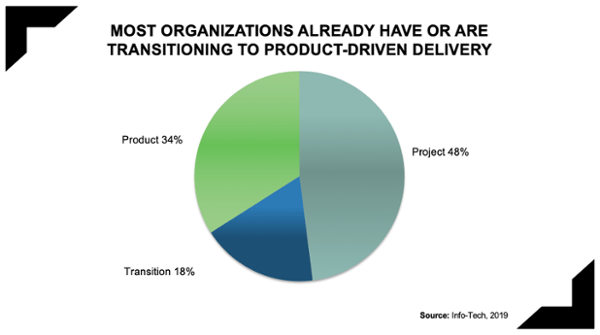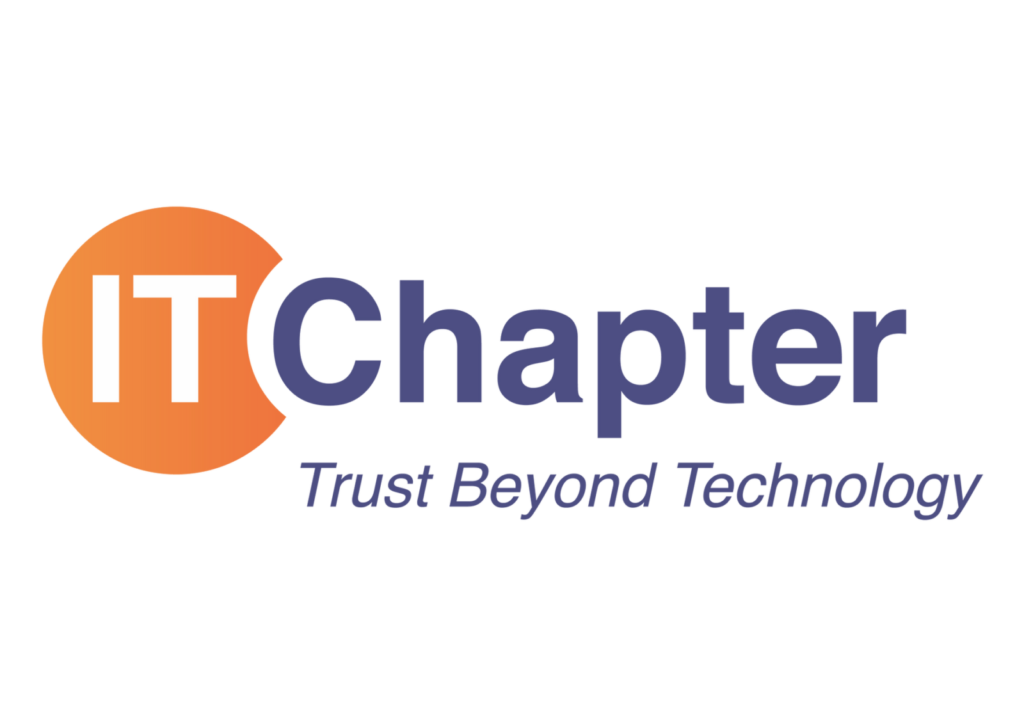Svetlana Sidenko was a storyteller at the BRMConnect 2020 conference. This blog is based on the content of her presentation.

Re-defining the role of the Business Relationship Manager in a context of organization’s rapid evolution towards product-centric operating models is increasingly needed. Establishing and clarifying the role of the BRM is not a new topic, it has always been important. However, new industry trends, recent findings from leading research organizations, observations, and my own experience as a BRM urge us to consider other possible venues for the BRM role evolution within organizations moving from a “project” to “product” mindset.
Certainly, the preference for the Product-Centric Application Delivery Model is on the rise. According to a Gartner survey research, 40% of organizations have adopted, or plan to adopt, a product-centric application delivery model[1]. Gartner predicts that this figure will reach 80% by 2022. Previously centered on projects and project management, Information and Technology Operating Models are rapidly shifting to models centered on product and product management with Agile methods and Lean principles adopted to support them. This change leads Info-Tech research to conclude that most organizations already have or are transitioning to a product-driven delivery.

What Are The Differences Between A Project And A Product Centric Organization?
Product delivery requires significant shifts in the way organizations complete development work and deliver value to their stakeholders. The major difference between the approaches is the funding model. While projects are funded by their occurrence, in product-centric organizations the funding is established by the Product Team. It’s incremental which provides flexibility, responsiveness and an optimized value realization. With this model, IT has a seat at the table during the prioritization process, in opposite to the project-centric approach. Accountability is also shifting, making the Product Owner and Manager accountable for the Product business success. Moreover, the definition of “scope” is different. In Projects, a specific change to the scope is managed via the change management process, while product-centric organizations see the change as an increment to the product maturity. At last, the supply and demand capacity are managed differently. In the product model, teams manage capacity themselves in contrast with the other approach, where the Project Manager is managing people’s capacity.
Why Do Organizations Shift From Projects To Products?
Product Management originated in the manufacturing business and found itself in the tech industry in the late 90s-early 2000s. It proved to be successful mostly in the space of software / digital product vendors to external consumers. Eventually, it became clear for corporate IT organizations that they also needed to manage their internal applications the same way, as crucial assets with a life cycle perspective. A “product” mindset is more suitable than a “project” mindset for prioritizing the delivery of valuable capabilities at a time of constant change and uncertainty. Often, product teams not only develop but also operate and maintain the product and its related services, enabling a cohesive and balanced end-to-end approach to the product’s life cycle. In addition, the product-centric model addresses issues with non-collaborative organizational culture, which are a serious impediment to the business value realization, by contributing to the removal of functional silos. This increases collaboration between cross-functional teams towards common goals and loyalty primarily to the success of the product, rather than to a specific group. The value realization is also substantially improved by the product funding model as new ideas can be funded incrementally. As a result, teams need different metrics that focus on business outcomes, such as customer satisfaction and product business success. One last game changer that contributed to development of the “product” mindset is the fact that many IT departments invested in developing critical business applications after realizing that companies from non-IT industries are suddenly becoming “standard software suppliers” by providing apps to their internal customers.
From Product Vendors To External Consumers To Corporate IT Organizations
Traditionally, corporate IT organizations didn’t see themselves developing, marking and selling software / digital products. Typically, they considered themselves supporters of an internal IT system that was difficult to understand and manage because it was mostly undocumented. In most cases, organizational responsibilities were unstructured and informal relationships rather than forward-looking planning were in place. All of this combined with communication problems between IT and the business units, which is the main source of dissatisfaction and broken relationship with internal customers. BRMs are well aware of these issues, as their mission is to re-build business relationships. On the other hand, the product-centric approach contributes to this goal. It also allows faster delivery of the most important capabilities needed and forces the organization to prioritize work because of funding constraints. Therefore, the willingness to understand and manage Corporate IT Organizations offerings as products and services has increased. For these organizations, it’s challenging to meet the increasing business expectations in terms of value, time-to-market and innovations. The product orientation has made IT organizations similar to software/digital products vendors, with the result that product management is accepted as a useful concept by the corporate IT organizations as well. The core elements of Product Management are the same for software/digital vendors and corporate IT organizations. However, priorities may differ.
What Drives Product-Centric Delivery Usage?
There is hardly any industry that is not increasingly dependent on digital technology, or software, be it as part of their products or as the backbone of their business operations. Digital technology has also gained importance in our private life and it’s critical for addressing the big challenges of our societies. The need for digital transformation drives organizations to adopt the Product-Centric approach. The three main reasons are the need to deliver faster, an ongoing digital transformation itself and clear preferences for Agile methods.
What Is The Future Of BRM In Product-Centric Organization?
The answer to this question needs to be considered in two perspectives being the tactical and strategical aspects of the BRM Role. With the development of Product Management at the Enterprise level, the tactical BRM role will no longer be needed for two reasons. Firstly, Tactical BRMs do often compensate for the inefficiency of internal IT Service Management practices. Secondly, the evolution of a “product” mindset diminishes the role of BRM role as an order taker.
Conversely, the Strategic BRM will continue shaping demand for IT shared services within organizations where the Product Managers are part of the IT Organization and positioned strategically. The downside is that Strategic BRMs and Product Managers will sooner or later find themselves with a significant overlap in activities and responsibilities, even though the roles of BRM and Product Managers are different. This is bound to happen as the Product Management model evolves and becomes part of the enterprise.
What Are The BRM Venues In The Enterprise Product Management Model Evolution?
One venue for the evolution of these two roles is to establish a powerful front office where BRMs and Product Managers team up to enable the delivery of valuable software / digital products and the evolution of IT services, to drive the change and transformation business need to go through. Another venue for Strategic BRM in the Product Model is to follow the Enterprise Product Management Evolution and assume the Product Portfolio Manager role for a family of related products, coordinating strategy and providing strategic guidance for requirements prioritization.
In conclusion, the role clarity in the provider strategy and operating model is key. When these are changing, the RACI is pretty much the first reliable method to use in positioning of the role. Other functions are changing as well, for example the need for dedicated BAs diminishes due to colocation of Product Owners and development staff. We will see this evolution happen very fast. On one side, the business executives and leaders of the Provider organization have to drive this exercise, but the BRM should enable it in its best and strongest capacity as trusted advisor and strategic partner. Strategic BRMs should be initiators of the new “front office”, teaming up with Project Managers towards value realization.
Full Presentation
[1] Gartner, “Survey Analysis: IT is Moving Quickly From Projects to Products”
